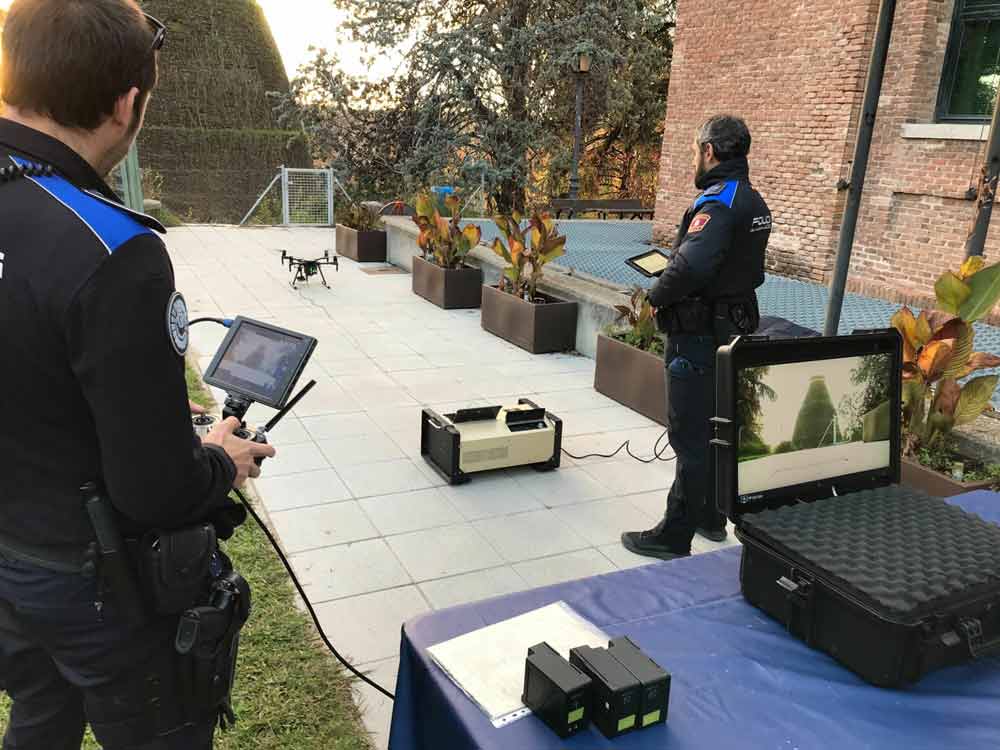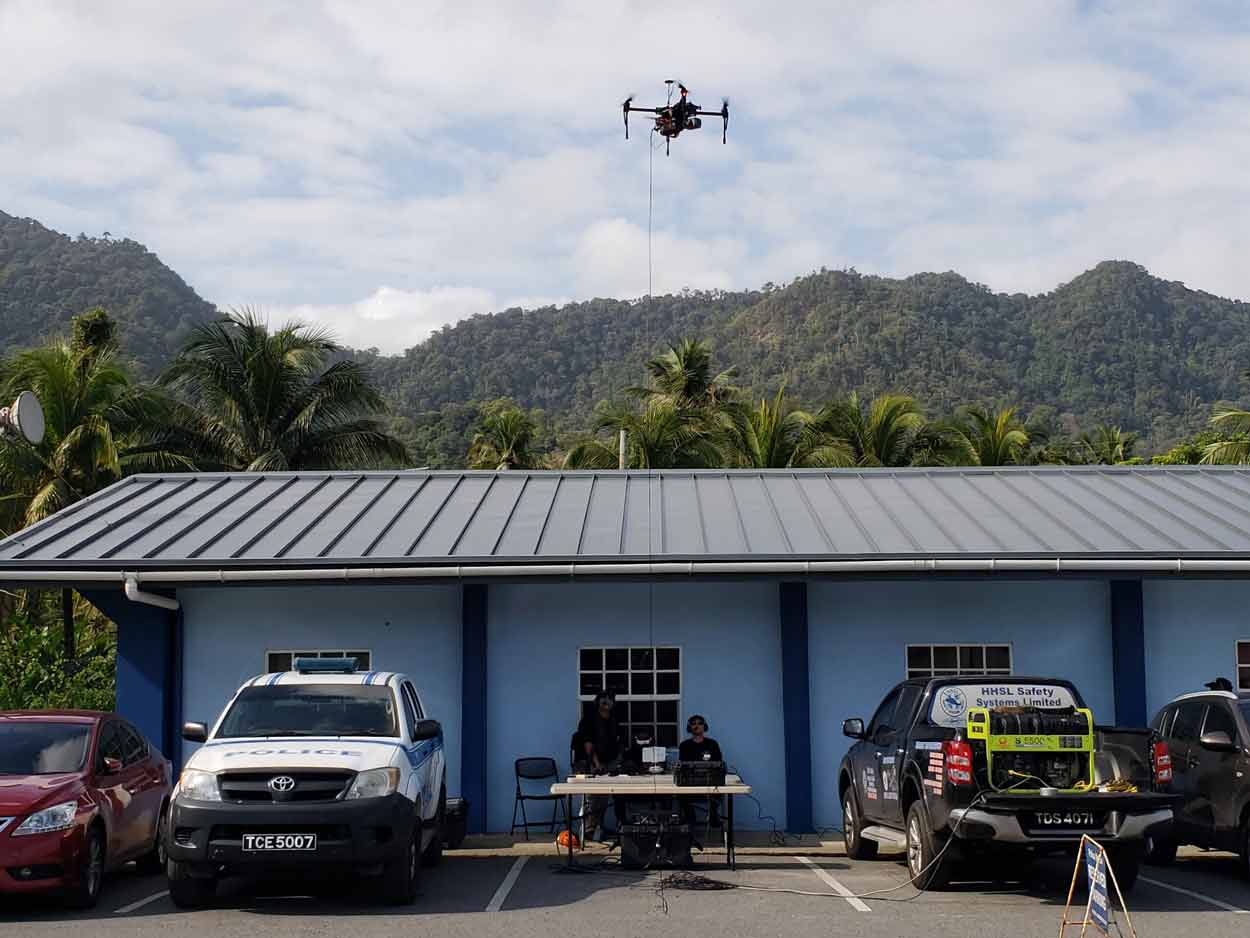Drone as First Responder (DFR): Definition and Applications
In 2023, more than 1,000 people worldwide were rescued from dangerous situations using drones, according to DJI’s Drones Rescues Mapped, marking a shift in emergency response tactics.
Indeed, various public safety agencies have recognized the value of incorporating drones into their operations to enhance public safety and community service. Read on to get a complete picture of Drone as First Responder (DFR), learn about its role, and find out about its various applications.
What is Drone as First Responder (DFR)?
Drone as First Responder programs use compact unmanned aerial vehicles (UAVs) designed for opérations de sécurité publique to provide support to police officers and firefighters. DFRs serve as the first line of response, arriving quickly at the scene of various incidents, including but not limited to crimes, road accidents, wildfires, hostage situations and public events. Timely and effective intervention is facilitated by the ability to deploy drones immediately upon receipt of emergency calls. Equipped with advanced technology, sécurité publique drones provide real-time, accurate information to reduce response times and help responders make informed decisions. The data they provide enhances visibility and communication, enabling emergency teams to take swift action. DFRs can also launch and fly from vehicles or fixed locations such as building rooftops. This ensures a comprehensive view of the conditions and activity on the ground.
Chula Vista Police Department: A pioneer in the field
The Chula Vista PD in California, USA, is a trailblazer in DFR implementation. As reported by DJI, in 2019 they became the first les forces de l'ordre agency to successfully implement this type of drone program, setting a precedent for other agencies to adopt DFRs as an essential public safety tool.

Public Safety Drone: Improving First Responder Situational Awareness
Drone as First Responder programs are a cost and time-saving technology. These drones can maneuver in confined environments like buildings and tunnels, unlike heavy manned aircraft such as helicopters.
Unmanned aerial vehicles bring numerous benefits to first responders in their daily operations. Here are the main ones.
● Faster opérations de recherche et de sauvetage,: Public safety drones can be deployed quickly in emergencies, and their onboard Wi-Fi antenna allows them to create a temporary network, facilitating communication.
● Natural disaster surveillance and response: DFRs provide firefighters with situational awareness in hostile environments (such as after earthquakes, tsunamis, or wildfires), enabling them to identify survivors and deliver critical medical supplies, helping to save lives.
● 24/7 crime prevention: Equipped with infrared sensors and optical zoom capabilities, DFRs can track fugitives, assist in de-escalation efforts, and help prevent and deter criminal activity.
● Facilitating investigations: Drone programs help police officers to document and collect evidence through features such as 3D scanning and LiDAR capabilities.
● Surveillance de la circulation: By providing a continuous aerial view, drones can help detect and prevent road accidents and traffic congestion.
● Monitoring public events: UAVs can be used to monitor and ensure the safety of public gatherings.
● Improved emergency response: Drones as First Responders quickly assess emergency scenes from 911 calls, enabling a tailored response.
Why choose Tethered Drones for DFR Programs?
“A tethered drone allows police to conduct long-term surveillance and secure an area’s perimeter, with a flight autonomy of up to 50 hours. It’s linked to a lightweight, ground-based station, and is compact and easy to transport. Quick to set up, it can be deployed or redeployed in minutes.This high level of mobility ensures exceptional responsiveness, so the drone can quickly change locations as needed.”
Limitations of Public Safety Drones
There are certain limitations to consider when it comes to Drone as First Responder. One concern is the potential invasion of privacy when drones are used to respond to emergency calls for less serious situations, such as noise complaints or minor water leaks.
Ensuring transparency in les forces de l'ordre drone flights is crucial. This means having clear controls and audits in place to define the specific authorized uses and operational areas.
Another challenge of DFR programs is that they often require UAVs to operate within a visual line of sight, which can limit their effectiveness in emergency situations.
When it comes to using tethered drones, they have a limited range, meaning they remain static. To overcome this limitation, an additional fleet of drones is required to cover greater distances.
Why is Drone as First Responder Important?
It is clear to see why public safety drones are growing in popularity. And with automation, artificial intelligence, and advanced sensors, they are becoming more sophisticated.
New DFR programs are strengthening law enforcement, but they come with challenges, including privacy risks.
Industry manufacturers are actively working to overcome these challenges to improve the efficiency of police and fire operations, with the ultimate goal of saving lives and preventing incidents. Drone as First Responder could shape the future of emergency response.
Drones as First Responder FAQ
What is the primary function of Drone as First Responder (DFR) programs?
Drone as First Responder programs deploy unmanned aerial vehicles (UAVs) to support public safety operations, providing real-time information to first responders to enhance situational awareness and expedite decision-making.
What role do DFRs play in natural disaster response?
Drone as First Responder offer situational awareness in hostile environments like earthquakes or wildfires, helping firefighters identify survivors and deliver essential medical supplies, thus aiding in disaster response and recovery.
Why are tethered drones advantageous for DFR programs?
Tethered drones provide long-term surveillance with up to 50 hours of flight autonomy, ensuring continuous monitoring and quick redeployment, which is essential for maintaining a secure perimeter in critical areas.
How do DFRs contribute to faster search and rescue operations?
DFRs are quickly deployed in emergencies, using onboard Wi-Fi antennas to create temporary networks for communication, thereby speeding up search and rescue efforts and increasing the chances of saving lives.
How do public safety drones assist in crime prevention?
Equipped with infrared sensors and optical zoom, DFRs track fugitives, assist police officer in de-escalation efforts, and help prevent and deter criminal activity, ensuring enhanced security and crime prevention.
What are some limitations of DFR programs?
Limitations include potential privacy invasion, the need for visual line-of-sight operation, and the static nature of tethered drones, which may require additional unmanned aerial vehicles (UAVs) to cover larger areas effectively.

